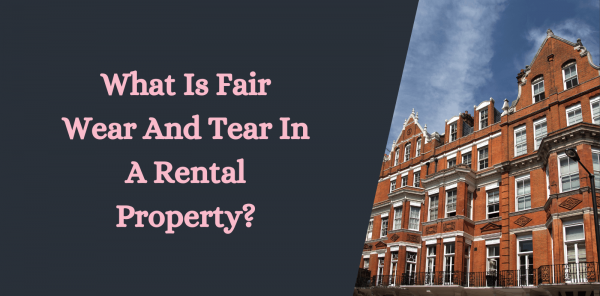The new additional HMO licence applies to houses and flats in multiple occupations (HMOs) let to 3 or 4 unrelated people, forming 2 or more households who share amenities such as a kitchen or bathroom. The Licence costs £500 per lettable unit (A lettable unit is a room that could be occupied as living accommodation by a household or part of a household that does not form part of the common parts of the property.) which is split into 2 payments and it will come into force from April 5th, 2022. The licence is valid for 5 years.
Definitions
Unit of accommodation
Part of the HMO occupied by a single household. This includes bedrooms in shared houses or flats, bed-sitting rooms, or self-contained flats.
Bedsit
Traditionally an exclusive rooms or room(s) with the sharing of one or more amenities.
Shared-type houses or flats
Traditionally occupied by a defined social group, namely student lets.
Shared use
Where one or more basic amenities, such as the bathroom, toilet, or kitchen facilities, are shared by two or more households.
Exclusive use
Where one or more basic amenities are provided for the sole use of a single household.
Occupant(s)
Everyone living in the property regardless of age.
Single household
Person(s) of the same family group. If a group of people shares a property, each person is defined as a single household unless they are all members of the same family.
Family
Includes husband, wife, partner, child, step-child, step-parent, grandchild, grandparent, brother, sister, half-brother, half-sister, aunt, uncle, niece, cousin, foster child.
How do I know if my property is an HMO?
Below is a table to show some examples of what does and does not constitute an HMO.
Here are some examples to show what can be an HMO
An HMO can be a:
2 bedroom flat with 1 cohabiting couple living with 1 unrelated tenant
3 bedroom house with 3 unrelated tenants
2 Bedroom house with 2x couples
An HMO isn't a:
2 bedroom house or flat with 2 unrelated tenants
3 bedroom house with a brother, sister, and cousin sharing. (Family)
Families are not licensable or 2 sharers.
What are the requirements for a mandatory licence?
The Council will refer to these minimum standards when deciding on the maximum number of households or persons that can occupy a property.
Kitchens- Location, layout, and condition
- Unless kitchens contain a suitable dining area, they must be positioned within two floors of any bedroom or unit of accommodation and must be directly accessible from the communal areas. The kitchen size and layout must allow the occupants to safely use the kitchen and to store, prepare and cook food in a safe and hygienic way. All floor surfaces must be reasonably smooth, waterproof, and capable of being cleaned. All corners and wall-to-floor junctions must be properly sealed.
- All wall surfaces must be smooth and capable of being readily cleaned. Where possible, a two-course tiled splashback shall be provided behind the sink, worktop, and cooker. A proprietary mastic sealant shall be used to seal all joints between the sink or worktop and the adjacent walls. All kitchen areas must be provided with adequate lighting, particularly over the cooking and food preparation areas. All kitchen areas, and in particular the cooking area, must be properly ventilated to the external air either by an operable window or a suitable mechanical ventilation system. All facilities and equipment must be fit for purpose.
Shared use sinks/Private Sinks
An adequately sized sink and drainer must be provided for every six occupants (or part thereof) that share the kitchen. The sink and drainer must be set on a stable base. Consideration will be given to the use of a dishwasher for additional occupants. The surface of the sink and drainer must be smooth, waterproof, and capable of being cleaned. Each sink must have an adequate supply of cold and constant hot water and must be properly connected to the main drainage system. The cold water supply shall be direct from the main supply.
Shared cookers
There must be a gas or electric full-sized cooker with four hobs for every five occupants (or part thereof) within the property. There must be an oven for every five occupants (or part thereof) within the property. Consideration will be given to the use of a microwave with a built-in oven for additional occupants.
Shared electrical sockets/Private electrical sockets
There must be two double electrical sockets, plus one additional socket for each major appliance e.g. cooker, refrigerator, freezer, washing machine. These two double electrical sockets must be positioned within the food preparation area, at the worktop level, and in a safe position.
Shared worktop
There must be a securely fixed worktop of smooth, waterproof material for every five occupants (or part thereof) within the property. This worktop must be at least 1500mm X 600mm deep, excluding any area covered by a major appliance.
Private worktop
There must be a securely fixed worktop of smooth, waterproof material. This worktop must be at least 1000mm X 600mm deep, excluding any area covered by a major appliance.
Shared storage/Private storage
There must be a dry goods storage cupboard of minimum capacity 0.15m3 (500 x 600 x 500mm) per occupant. This storage cupboard must be finished internally and externally with smooth and waterproof surfaces. The space in any cupboard below a sink will not be considered acceptable for this purpose. The storage cupboard can be in the shared kitchen or in each unit of accommodation.
Shared refrigerators/Private refrigerators
There must be a refrigerator for every five occupants (or part thereof) within the property. The refrigerator must have a freezer compartment or there must be a separate freezer.
Refuse
There must be appropriate facilities for storing rubbish generated by the property. The property must comply with the scheme, which may be subject to change, issued by the local authority for the storage and disposal of domestic refuse pending collection. A licence holder’s failure to comply with the scheme is a breach of the licence and a criminal offence.
Bathroom and toilet facilities-Location, layout, and condition
- All bathroom and toilet facilities should be located in enclosed rooms of adequate size and layout. All bathroom and toilet facilities should be within two floors of any bedroom or unit of accommodation and directly accessible from the communal areas unless provided as en-suite facilities for the exclusive use of that occupant.
- All bathroom and toilet facilities should be inside the main building. All bathroom and toilet facilities must be in a hygienically designed and constructed room. This room must have an appropriate wall and floor surface finishes.
- All bathrooms and toilets must be suitably heated, lighted, and ventilated. All baths, showers, and wash hand basins must be fitted with taps and supplied with cold water and a constant supply of hot water. They must also be properly connected to the main drainage system.
- All wash hand basins and baths must be provided with a two-course tiled splashback. Shower cubicles must be fully tiled or be complete self-standing cubicles. All baths, toilets, and wash hand basins must be fit for the purpose.
- Shared toilets, baths, and showers There must be at least one fixed bath or shower available for every five occupants (or part thereof). There must be at least one toilet separate from the bathroom for every five occupants (or part thereof). There must be a wash hand basin in each bathroom and a compartment containing a toilet.
- Private toilets, baths, and showers There must be a fixed bath or shower and toilet with wash hand basin either within the unit of accommodation or within reasonable proximity of the living accommodation. The room must have an unobstructed area of a minimum of 450mm diameter on a plan for use of the facilities.
Heating- Fixed heating
The minimum level of energy efficiency provisions are designed to ensure that, unless an exemption applies, a licenced HMO has an Energy Performance Certificate (EPC) rating of E or more efficient. All units of accommodation must be equipped with adequate means of space heating capable of maintaining a temperature of 21 degrees celsius when the outside temperature is -1 degrees celsius. Electrical heating appliances must have a dedicated electrical socket. If the heating is provided by instantaneous electrical type it must be capable of being controlled by a room thermostat. The heating must be available at all times and must be under the control of the occupant. The method of heating must be safe and should be efficient and affordable. Where heating is provided by a gas or electric central heating system, the fuel supply must be via a quarterly credit meter and not a key or card meter. This does not apply where a system is exclusive to a unit of accommodation or the HMO is let by a single tenancy agreement.
Fire precautions and safety- Fire risk assessments
You are required to have a Fire Risk Assessment by the Regulatory Reform Order (Fire Safety) 2005. you should provide The Council with a copy of your Fire Risk Assessment.
The London Fire Brigade are the lead authority enforcing the Regulatory Reform Order (Fire Safety) 2005. You can find more information about your fire safety responsibilities on the London Fire Brigade's website.
Portable appliances
All portable electrical appliances provided by the landlord must be maintained in a safe condition and proper working order. Portable Appliance Testing (PAT) should be carried out every twelve months with records kept for at least five years. Any necessary maintenance or repair work must be undertaken by a competent electrical engineer. The Council may request copies of all maintenance records and PAT testing.
Electrical safety
The electrical installation must be maintained in a safe condition and in proper working order. A full electrical safety inspection must be carried out at least every five years and an NICEIC or other equivalent electrical safety certificate obtained. Any necessary maintenance or repair works must be undertaken by a competent electrical engineer in accordance with Part P of the
Building Regulations.
Copies of the electrical certificate must be provided to The Council on request.
Gas safety
If gas is supplied to the property, a gas safety certificate must be submitted to us annually. The gas safety certificate must relate to the whole gas installation and include all gas appliances. It must demonstrate that all appliances have been serviced and safety checked within the previous twelve months. Any defects noted on the certificate must be rectified.
Room sizes
- All units of accommodation shall be large enough to provide sufficient space for living, sleeping, food storage, and preparation, except where there is a separate shared kitchen provided.
- The room sizes specified below are the minimum sizes that will be accepted within licensed HMOs. All habitable rooms, bathrooms, and toilets shall have a minimum floor-to-ceiling height of 2.14m. Any existing attic rooms shall have a minimum height of 2.14m over not less than 75% of the room area. Any floor area where the ceiling height is less than 1.5m shall be disregarded.
- In calculating the floor area, we will not normally include the space occupied by corridors, bathrooms, toilet compartments, and chimney breasts.
Bedsit-type accommodation
Each single-person bedsit with exclusive kitchen facilities shall be a minimum of 13m2. The bedsit can be reduced to a minimum of 10.22m2 if there is a separate shared kitchen. Each double-person bedsit with exclusive kitchen facilities shall be a minimum of 18.5m2. The bedsit can be reduced to a minimum of 15m2 if there is a separate shared kitchen.
Shared-type houses or flats
Each single bedroom shall be a minimum of 6.51m2, assuming there are separate kitchen and bathroom facilities and that there is a separate living area. Each double bedroom shall be a minimum of 10.22m2, assuming there are separate kitchen and bathroom facilities and that there is a separate living area.
Shared kitchens
Kitchens shared by up to five people must be at least 6.51m2. Kitchens shared by up to ten people must be at least 11m2.
Pest control
The licence holder must take reasonable steps to proof the property from rats and mice. If the license holder becomes aware of a pest infestation, steps must be taken to eradicate all pests in a timely manner. (Examples of pests are rats, mice, bedbugs, fleas, cockroaches, wasps, and pharaoh ants).
Required Information before applying for a licence:
to apply for a licence please follow the link here you need to have the following information to hand before starting your application.
- Details of the person or organization making the application
- Details of the proposed licence holder (a person or organisation)
- Details of the property, including the number of rooms and facilities the number of households and tenants you want the property to be licensed for
- A tenancy information pack which should include, where applicable, up-to-date electrical inspection certificate, fire risk assessment, gas safety certificate, emergency lighting system documentation, portable appliance test certificate(s), fire detection warning documentation, EPC certificate, building control certificate of completion, party wall agreements and tenancy agreement(s).
Application of these standards
All facilities in this standard must be available to the occupants at all times. When a licensing application is received, The Council will check whether the property complies with these minimum standards. These standards may be varied at the discretion of the Licensing Officer. If the property does not fully comply with any necessary remedial works will become a licence condition. When setting licence conditions, The Council may set a timescale for the work to be completed. Even if a property complies with these standards, The Council may still require other works to be carried out. A Council Officer may carry out a full inspection of the property within five years of the licence being granted. The Officer will decide whether any further work is required to bring the property up to a reasonable standard under the Housing Health and Safety Rating System (HHSRS). The Officer will also check that the property is being properly managed and maintained in accordance with the Management of Houses in Multiple Occupation (England) Regulations 2006.
Why do I need to tell third parties, such as my mortgage provider, about my HMO application?
Licences are legally enforceable and may require changes to the house. People with a legal interest in the property have a statutory right to know how the HMO licence may affect them. This would include mortgage providers, other owners, or managers.
Can a property receive a property license if the lease does NOT allow for private renting or use as an HMO?
Yes. Legally any property which falls within the definition of either Selective, Additional, or Mandatory licensing will require a licence. Whether the lease agreement allows for this use is a civil matter between the leaseholder and the freeholder. The council will grant a licence irrespective of the terms and conditions of a lease agreement but may shorten the length of the licence to two years to enable the licence holder to either obtain a waiver of the lease condition from the freeholder or to cease using the property in a way which breaches a lease condition.
Do I need to carry out a fire risk assessment?
As the owner, landlord, or occupier of a business or non-domestic premises you are responsible for ensuring it is safe from fire. This includes ensuring that a risk assessment has been carried out by a competent person.
What if the property does not meet the standard or requires work?
These property standards apply to HMOs regardless of whether they are licensed or not. So, if you have been renting out your property as an HMO, then you should already be complying with these standards.
Once your application has been processed an officer from the council will come to visit your property. If your property does not comply with these standards or the living conditions are poor the council may place conditions on your licence or serve an enforcement notice requiring you to carry out the works.
Rent Repayment Orders-unlicensed properties
Where a landlord has failed to license an HMO or selective licensing property, and the tenant was in receipt of Housing Benefit or Universal Credit for that period, the Council must consider applying to the First-Tier Tribunal (Property Chamber) (FTT) for a Rent Repayment Order5. The FTT has the power to request up to 12 months’ rent is repaid to the Council, where such a finding is made. Tenants can also apply to the FTT for repayment of any rent they have paid. The Council will support the tenant in any application, including providing evidence, only doing so where it does not conflict with any duty owed to a third party and in compliance with duties set by General Data Protection Regulations (GDPR) or other responsibility placed on the Council.
Breach of licence conditions/Breach of HMO Management Regulations
It is a criminal offence to operate an HMO or other licensable property without having a valid licence. Additionally, an offence is committed by a licence holder if they knowingly permit the HMO to be occupied by a number of occupants exceeding that specified on the licence or otherwise fail to comply with licence conditions. The fines for these offences are unlimited. The Council may choose to respond to any such breach or failure to license by issuing a Civil Penalty Notice. Where this course of action is taken and Civil Penalty Notices are issued, there is a maximum fine limit of £30,000.






Share this with
Email
Facebook
Messenger
Twitter
Pinterest
LinkedIn
Copy this link